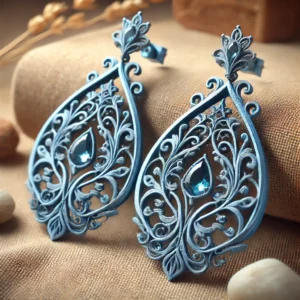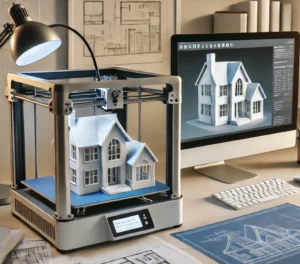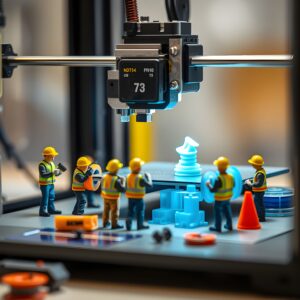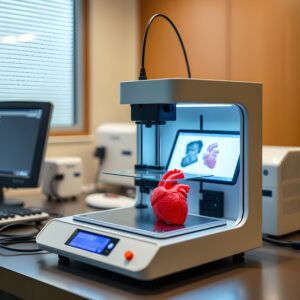Exploring Innovative 3D Printer Designs for Custom Creations: Jewelry, Prototypes, and More
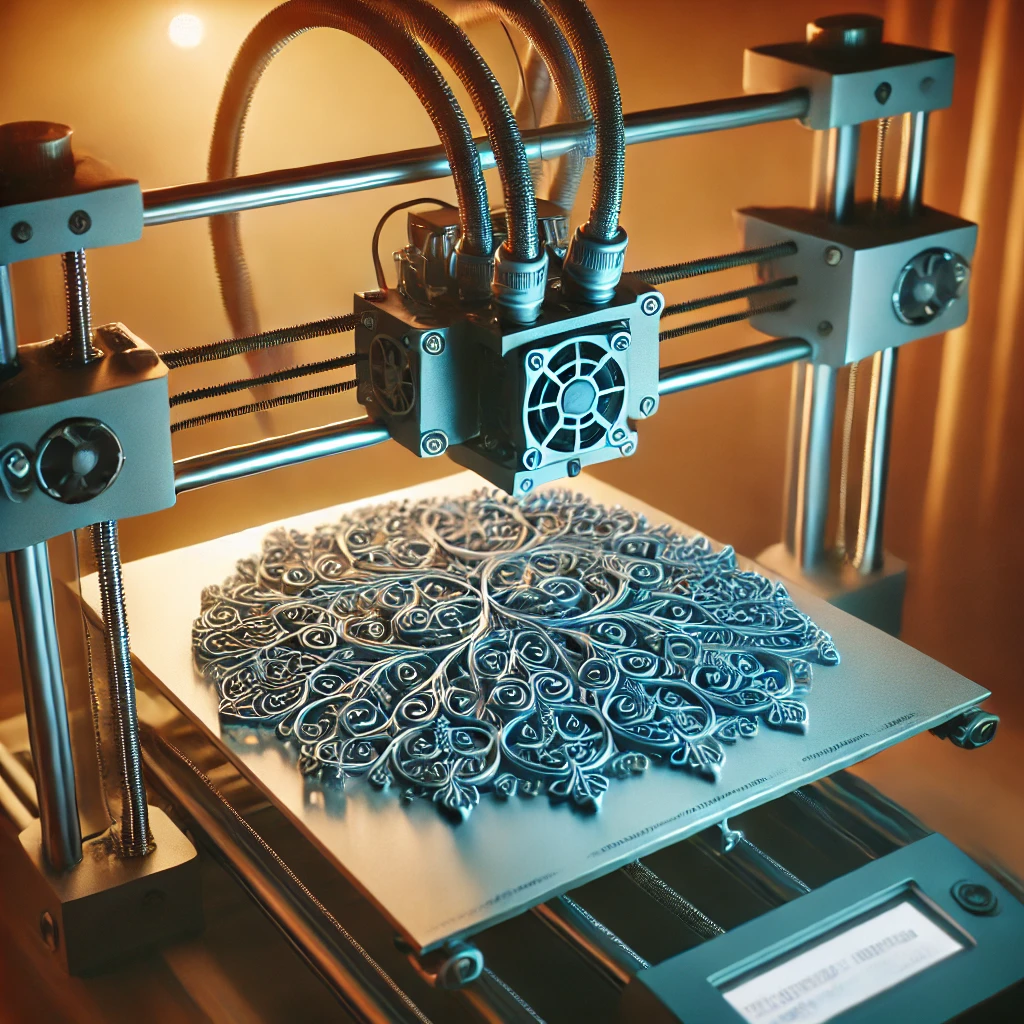
3D printer designs are advancing quickly, enabling intricate and customized creations across diverse industries. From highly detailed jewelry designs to complex automotive and medical parts, 3D design and printing services are revolutionizing manufacturing. This article explores the range of custom 3D printing services available today, the technological advancements behind these printers, and the potential for personalized creations in various industries.
The Growing Demand for 3D Printer Custom Designs
The demand for 3D printing has surged over the past decade, driven by industries like fashion, aerospace, automotive, healthcare, and education. Each sector is leveraging 3D printing’s unique capabilities to produce customized items that traditional manufacturing cannot achieve, especially with the same efficiency and detail.
Key Areas Leveraging Custom 3D Printing Designs
-
Jewelry and Fashion Accessories: Custom jewelry design is a fast-growing application for 3D printing. The precision required for jewelry creation is met by resin-based SLA (stereolithography) printers which produce fine details for unique, intricate designs.
-
Medical Devices: Personalized medical devices are increasingly common, from dental implants to prosthetics. 3D printing in healthcare enables the customization of implants that fit the unique anatomy of each patient, making treatments more effective.
-
Automotive Prototyping: For automotive design, custom 3D printing allows for lightweight structures with complex geometries that can enhance vehicle performance and fuel efficiency. High-strength materials like metal powders are often used to print durable parts suitable for industrial applications.
The Advantages of Custom 3D Printing Services
Custom 3D printing designs offer several advantages that make them invaluable across many industries:
-
Precision and Complexity: Advanced 3D printers can render designs with incredible detail and precision, making them suitable for highly complex geometries that would be impossible or cost-prohibitive with traditional methods.
-
Material Flexibility: Modern 3D printers accommodate a range of materials, from metals and ceramics to biocompatible plastics and flexible elastomers. This flexibility allows designers to select the ideal material for their specific needs, whether for strength, flexibility, or biocompatibility.
-
Cost-Effectiveness: 3D printing reduces costs by minimizing material waste, often achieved through precise additive processes. In addition, it eliminates the need for molds and tools, which are expensive in traditional manufacturing.
-
Quick Prototyping and Iteration: Rapid prototyping capabilities allow designers to create and test models faster than ever. With faster iteration cycles, companies can bring products to market more quickly, which is essential in fast-paced industries like tech and fashion.
Key Developments in 3D Printer Designs
Recent innovations have made 3D printers faster, more precise, and quieter. Here are some of the standout developments in 3D printer designs today:
High-Speed Printing Models
The FLSUN T1 Pro, one of the fastest desktop 3D printers available, can reach speeds of up to 1000mm/s, significantly reducing print times. With advanced vibration compensation and a silent turbine fan, it combines speed with minimal noise, making it ideal for home and office use.
The Creality K1 SE is another high-speed model that focuses on precise, small-to-medium-sized parts. Although its speed isn’t as high as the T1 Pro, it is highly versatile and accessible for both hobbyists and professionals.
Industrial-Grade Ceramic Printing
The Lithoz CeraFab S320 specializes in ceramic printing for industries like aerospace and medical. With the ability to produce high-temperature-resistant and chemically stable components, this printer meets the needs of complex industrial applications that demand precision and material integrity.
Portable and Compact 3D Printers: A New Frontier
Innovations in portability have introduced a new category of 3D printers ideal for field applications and educational use. MIT researchers recently developed a handheld chip-based 3D printer that uses silicon photonics to create 3D-printed objects at a microscopic level. This device enables on-the-go printing in a compact form, with potential applications in medical and field environments.
Types of Custom 3D Printing Designs
-
Functional Prototyping
Functional prototypes allow companies to test their designs in real-world conditions without committing to full-scale production. Rapid prototyping is especially valuable in industries where continuous design iterations are essential, such as automotive and consumer electronics. -
Fashion and Jewelry Designs
The precision of SLA and other resin-based printers enables custom jewelry designs with intricate detailing that would be nearly impossible to produce by hand. Designers can create highly personalized accessories that align with current fashion trends while experimenting with new shapes, textures, and materials. -
Medical Implants and Prosthetics
Medical applications of 3D printing offer life-changing benefits for patients. Custom implants and prosthetics can be tailored to individual body shapes and requirements, improving patient comfort and treatment outcomes. Additionally, biocompatible plastics and metals allow for safe, durable medical devices. -
Educational Models
Schools and universities use custom 3D printing to create models for teaching, especially in STEM fields. Models of the human heart, mechanical components, and chemical structures allow students to engage with hands-on learning.
Innovations in Materials for 3D Printing
The range of materials available for 3D printing has expanded considerably, enabling applications in new fields and enhancing product quality.
Key Materials in 3D Printer Custom Designs
-
High-Strength Metals
Metals like titanium and stainless steel are commonly used in custom 3D printing for aerospace and automotive applications. These materials offer the strength and durability needed for high-stress environments. -
Biocompatible Plastics
Medical applications often require materials that are safe for human contact. Biocompatible plastics like PEEK and ABS are essential for implants, dental prosthetics, and other medical devices. -
Flexible Elastomers
Elastomers are a class of flexible materials ideal for wearable devices and 3D printer jewelry designs. Their elasticity makes them comfortable for prolonged wear, while their durability ensures they hold up over time. -
Ceramics for High-Temperature Environments
Ceramic 3D printing, as seen in the Lithoz CeraFab S320, provides materials suited for high-temperature applications, such as in aerospace and industrial gas turbines. Ceramics can withstand extreme conditions without degrading, making them valuable for components exposed to heat and pressure.
Challenges in 3D Printer Designs
Despite its advantages, 3D printer custom designs face certain challenges that can limit their applicability:
-
Material Limitations: While material options have grown, certain applications still lack appropriate materials, especially in high-stress or chemically reactive environments.
-
Speed vs. Detail Trade-off: High-speed printers often compromise on fine detail, which can be problematic for applications like jewelry or dental implants that require precision.
-
Cost: The upfront cost of high-quality, industrial-grade 3D printers can be prohibitive for smaller businesses or educational institutions.
-
Software Complexity: Setting up and fine-tuning designs for 3D printing requires specialized software knowledge. Improvements in user-friendly interfaces will be essential for expanding accessibility.
Future of Custom 3D Printing: AI and Machine Learning Integration
The future of custom 3D printing design may be shaped by artificial intelligence (AI) and machine learning. AI tools can optimize design structures, improve print speed without sacrificing quality, and suggest materials based on the intended application. Integrating AI into 3D printing could streamline the design process, reducing errors and enabling real-time adjustments.
AI-driven design assistance also has the potential to make 3D design and printing services more accessible to novices, helping them create detailed designs with minimal expertise. As AI technology advances, 3D printing may become even more integral to mainstream manufacturing, allowing users to generate highly customized products on demand.
Real-Life Applications: Custom 3D Printing Success Stories
-
Aerospace Prototyping with Metal 3D Printing
The aerospace industry has adopted metal 3D printing to create lightweight components with high strength-to-weight ratios, crucial for aircraft efficiency. Companies like Airbus and Boeing are incorporating custom 3D printed parts into their designs to improve fuel economy and reduce costs. -
Dental Prosthetics with Biocompatible Materials
Dental labs use custom 3D printing to create prosthetics tailored to patients’ oral structures. The precision and biocompatibility of materials like PEEK allow for more durable and comfortable dental solutions. -
Fashion Accessories and Jewelry
High-end designers are leveraging 3D printer jewelry designs to craft custom pieces that align with their brand’s aesthetic. The ability to print intricate details directly from CAD designs enables a high degree of personalization. -
Automotive Components for Enhanced Performance
Automotive companies use 3D printing to prototype parts and even produce custom components for high-performance vehicles. Materials like titanium and carbon fiber provide the necessary strength while minimizing weight.
The Expanding Horizons of 3D Printer Custom Designs
As technology advances, the applications of custom 3D printing design continue toextend, making it an essential tool for a wide variety of industries. From high-speed industrial applications to personalized jewelry and fashion, 3D printing offers unmatched flexibility, precision, and innovation.
The continued evolution of materials, speeds, and user-friendly design software will help unlock further applications, bringing 3D printing into even more sectors, including everyday consumer goods. For companies and creators, the potential of custom 3D printing services means a future where complex designs are more accessible, efficient, and personalized than ever before.
Visit our other website: https://synergypublish.com

